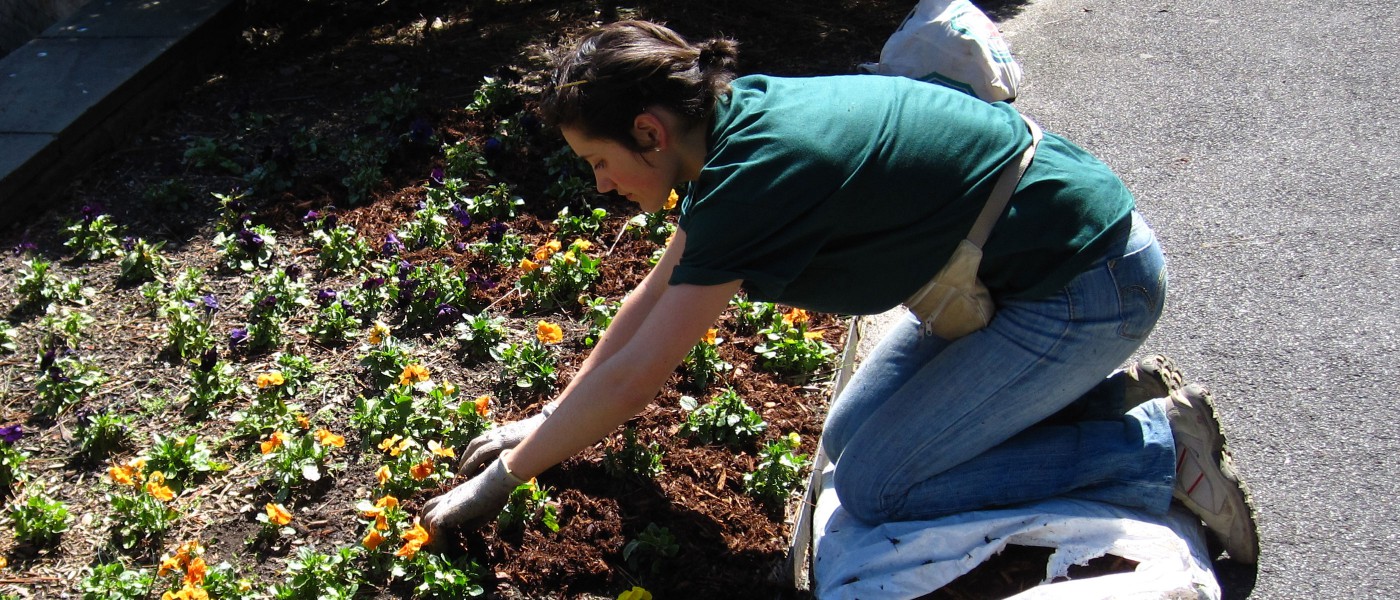What Is Mulch, and What Does It Do?
Mulch is a soil covering that is applied to protect and improve soil and plants. Common materials used for mulch are wood chips, autumn leaves, and stone or gravel. Organic materials like wood chips and leaves are best because they eventually decompose and add nutrients to the soil. Mulch is also ideal for creating pathways or filling in furrows between plant beds. Here are some of the benefits of mulch:
- Prevents soil erosion on steep slopes.
- Reduces compaction from heavy rain and foot traffic.
- Keeps weeds under control by reducing sunlight to seedlings.
- Regulates soil temperature, cooling it in summer and insulating it in winter, thereby reducing the wide fluctuations that result in soil heave.
- Conserves moisture; mulch can mean life or death for plants during drought.
- Improves the appearance of the garden.
- Creates habitat for beneficial organisms such as earthworms.
General Rules of Mulching
Match the mulch to the planting situation (see chart below). For example, under low evergreens where you don’t grow anything else, stone makes a good permanent mulch. However, it wouldn’t be great in a vegetable garden where you till the soil every year. Warm-weather crops like tomatoes and eggplants can tolerate plastic mulch, but cool-weather crops, such as broccoli and greens, are better off with straw, shredded leaves, or newspaper. If your soil tends to be wet, organic mulch may retain too much water, which will encourage slugs and snails and may even cause plant stems to rot. If you have problems with rodents, sharp-edged stones are better to use than organic mulches because animals don’t like digging through them.
Mulch wide but not deep. Too much mulch is not a good thing; it can make oxygen unavailable to plant roots, causing plants to decline. The optimal depth of your mulch layer depends on the material you use (see chart). To avoid rot and pest problems, do not create mulch “volcanoes” around the trunks of shrubs and trees and the crowns of herbaceous plants. Keep mulch about six inches away from tree trunks, and never cover the root flare of a tree where the woody roots meet the soil surface; bark will rot if buried in any moist material.
In winter, wait until temperatures have dropped below freezing and your perennials are completely dormant before applying a layer of mulch over them for insulation. Otherwise, winter mulch can smother plants and breed disease. Also keep in mind that the goal of winter mulch is to keep plants dormant, not warm. If they are kept too warm, they may break bud, and the tender growth will be killed by winter conditions.
Know how much you’ll need. Mulch is often sold by the cubic yard. Here’s an easy way to figure out how much to buy:
- Multiply the length of your garden by the width to determine its size in square feet.
- Decide how deep you want your mulch to be in inches (see chart).
- Multiply the size of your garden in square feet by the depth of your mulch in inches.
- Divide the number you get by 324. This is the number of cubic feet of mulch you need.
| Material | Depth | Water Retention | Insulating Effect | Weed Control | Decomposition Rate | Comments |
|---|---|---|---|---|---|---|
| Leaves | 3 in. | Fair | Good | Fair | Slow | Adds nitrogen; chop for permeability |
| Grass Clippings | 1 in. max. | Good if unmatted | Good | Fair | Rapid | Green adds nitrogen; avoid grass treated with pesticides and herbicides. |
| Compost | 3 in. | Good | Good | Fair | Rapid | Adds nutrients; can mix with leaves, other mulch. |
| Straw | 1-2 in. chopped | Good | Good | Good | Fairly slow | Robs nitrogen; highly flammable; avoid oat straw. |
| Cocoa hulls | 1 in. | Good | Good | Good | Slow, adds nitrogen | May develop mold; smells like chocolate. |
| Mixed bark | 2-3 in. | Good | Good | Good | Slow | Replace every 2 years. |
| Redwood Bark | 2-3 in. | Fair | Good | Fair | Very slow | Robs nitrogen; earthworms avoid redwood. |
| Newspaper | 2 layers | Good | Good | Best | Rapid, lasts 1 season | Cover with another mulch to hold in place. |
| Evergreen boughs | Several layers | Fair | Good | Fair | Slow | Good for erosion. Remove in spring. |
| Pine needles | 1.5 in. | Good | Good against wind | Good | Slow | Good for acid soil. |
| Sawdust | 1.5 in. | Fair | Good | Good | Slow | Robs nitrogen, high carbon content; low earthworm activity. |
| Wood shavings | 2-3 in. | Fair | Fair | Fair | Very slow | Robs nitrogen, hardwoods better than pine or spruce. |
| Wood chips | 2-4 in. | Good | Good | Good | Fairly slow | Doesn’t rob nitrogen. |
| Seaweed | 4-6 in. | Good | Good | Best | Slow | Adds nitrogen, potash, sodium, boron. |
| Green cover crop | Full height | Good | Good | Good | Till under | Adds nitrogen. |
| Stone | 2-4 in. | Fair | Good | Fair | Negligible | Permanent mulch; adds some trace elements. |
| Landscape fabric | 1 layer | Good | Good | Good | Slow, lasts several years | Use in permanent beds; cover with top mulch. |
| Plastic | 1 layer, 1-6 mil. | Excellent | Good | Best | Breaks down after a season or two | Adds nothing to soil; black good for heating soil. |




